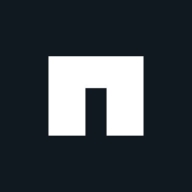

AWS Elastic Disaster Recovery and NetApp Cloud Volumes ONTAP are key players in disaster recovery and cloud storage management, with users favoring AWS for its pricing and support and NetApp for its advanced features.
Features: AWS Elastic Disaster Recovery is noted for instant block replication, a pay-as-you-go pricing model, and live block verification. NetApp Cloud Volumes ONTAP excels in data management, file-sharing capabilities, and high availability, with features like Snapshots and SnapMirror.
Room for Improvement: AWS Elastic Disaster Recovery could enhance automation, logging, and replicated data management support. NetApp Cloud Volumes ONTAP requires simpler navigation, better RAID-level protection, and improved cloud integration.
Ease of Deployment and Customer Service: AWS Elastic Disaster Recovery is versatile, enabling quick deployment on various cloud types, with generally high customer support. NetApp Cloud Volumes ONTAP provides strong cloud integration but has a complex feature set that can complicate deployment; customer service is highly rated with room for improved ticketing.
Pricing and ROI: AWS Elastic Disaster Recovery, seen as expensive, offers a high ROI with flexible pricing models supporting scalability and cost savings. NetApp Cloud Volumes ONTAP, while costlier, is praised for its advanced features and enterprise pricing strategies, though users seek more flexible licensing.
However, with AWS Elastic Disaster Recovery Service being a native service, integration is seamless, highlighting the return on investment.
We saved around $1.2 million in capital expenditure by avoiding a dedicated secondary on-premises disaster recovery site.
We no longer have to schedule employees on weekends since the system automatically triggers alerts, allowing engineers to respond as needed.
In case of any issue, they are ready to provide support within the defined SLA timeline.
I would rate the customer support an eight, as it often takes a lot of time to engage and get a solution.
has definitely solved many issues we have faced
We can expand it to multiple data centers or different areas such as EMEA and APAC.
AWS Elastic Disaster Recovery is scalable and has handled growth in our organization well.
The scalability is quite good and we were able to scale this service to many of the services that our company uses.
It wouldn't help with outages either; the scaling is manual, and there are no processes we've used to automate that for unexpected scenarios.
It is very good and very reliable.
AWS is not difficult, but the cost associated with replicating data to another region can be significant.
AWS Elastic Disaster Recovery is stable.
This would detail user activity directly in the ACL console for easier debugging and auditing.
It would be beneficial to get some insights when a disaster happens, including identification and probable solutions to ensure effective recovery.
If the tool could provide more built-in dashboards to show replication lag trends, failover readiness, or system dependencies, it would save time and improve transparency for both field teams and regulatory reporting.
My opinion is that support is generally very good. There are instances where they take longer to respond or resolve issues, especially when customers have urgent needs, but ultimately, resolution is achieved.
It would be nice to see technology supporting the Elastic Fabric Adapter on Amazon AWS, therefore getting RDMA technology for more low-latency connections.
There is no heavy licensing fee, making it scalable and cost-efficient as our network and data grow.
There is definitely a scope of improvement, and for year-end licensing, they should definitely improve the cost.
When we replicate and fail over our customer management, metering, and outage tracking systems to the AWS cloud, we were able to upload to the AWS cloud in just under three hours, compared to an estimated 36 to 48 hours had we done it through manual recovery.
AWS Elastic Disaster Recovery supports a wide range of source environments, including VMware, Hyper-V, physical servers, and other cloud providers, making it versatile for different IT infrastructures.
AWS Elastic Disaster Recovery Service is a native service, integration is seamless.
The granular ability to divide up the performance and the amount of storage you want is really fantastic.
| Product | Market Share (%) |
|---|---|
| AWS Elastic Disaster Recovery | 1.3% |
| NetApp Cloud Volumes ONTAP | 0.9% |
| Other | 97.8% |

| Company Size | Count |
|---|---|
| Small Business | 5 |
| Midsize Enterprise | 4 |
| Large Enterprise | 11 |
| Company Size | Count |
|---|---|
| Small Business | 8 |
| Midsize Enterprise | 11 |
| Large Enterprise | 53 |
CloudEndure Disaster Recovery enables real-time replication and rapid recovery to enhance organizational resilience. Key features include block-level data replication, ease of use, cost-effectiveness, and automated recovery orchestration. Users benefit from increased efficiency, improved workflows, and enhanced data management, significantly improving organizational performance and business continuity.
NetApp Cloud Volumes ONTAP is an efficient storage management solution for managing and storing data in the cloud. It offers seamless integration with cloud providers, advanced data replication capabilities, and high data protection. With reliable performance, it is ideal for industries like healthcare and finance.
We monitor all Cloud Backup reviews to prevent fraudulent reviews and keep review quality high. We do not post reviews by company employees or direct competitors. We validate each review for authenticity via cross-reference with LinkedIn, and personal follow-up with the reviewer when necessary.